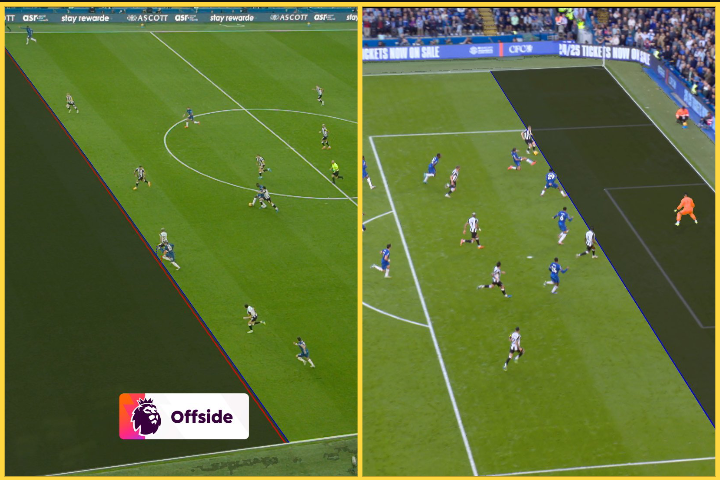PREMIER LEAGUE EXPLAINS VAR DRAMA: Why Isak's Goal Counted While Palmer's Was Disallowed in Chelsea vs. Newcastle
An Inside Look at the Controversial Offside Decisions That Shaped the Match

Both Chelsea and Newcastle had crucial moments with VAR (Video Assistant Referee) calls during their match on Sunday. Cole Palmer Chelsea player, believed that his goal in the fourth minute had given his club the lead, but VAR declared it offside. A review later approved Newcastle’s goal, which was scored by Alexander Isak. Here’s why the other counted and the first was canceled.
Palmer’s Disallowed Goal
Cole Palmer converted a pass from his teammate Nicolas Jackson to score a great goal early in the game. At first, the referee indicated that it was a valid goal, but VAR reviewed and cancelled. When Jackson completed the pass, Palmer was just ahead of Bruno Guimaraes, Newcastle’s last defender, according to a closer review by VAR official Jarred Gillett. The offside rule states that an attacker’s body is considered offside if it is closer to the goal than the last defender, so Palmer’s goal was disallowed.
The Premier League explained, “Cole Palmer was found to be in an offside position when the pass was played.”
#CHENEW – 4’ VAR OVERTURN
Palmer’s goal was initially awarded on-field. The VAR checked and confirmed that Palmer was in an offside position and recommended that the goal was disallowed. pic.twitter.com/mU4zOzu2yJ
— Premier League Match Centre (@PLMatchCentre) October 27, 2024
Why Isak’s Goal Was Allowed
Newcastle’s goal was scored by Alexander Isak in the 32nd minute, however it was also ruled offside by VAR. This time, VAR confirmed that Isak had timed his run precisely, remaining behind or in line with Chelsea’s last defender at the time of the pass. Isak’s goal was valid because of his position.
“Isak’s goal was valid because he was in line with the last defender,” the Premier League later said.
#CHENEW – 32’
The referee’s call of goal was checked and confirmed by the VAR as Isak was in an onside position. pic.twitter.com/x41r2HIIiH
— Premier League Match Centre (@PLMatchCentre) October 27, 2024
How the Offside Rule and VAR Work
The offside rule is in place to keep players from gaining an unfair advantage by coming too close to the goal without a defender in front of them. It is considered offside if a player’s head, body, or feet—any part of the body that has the ability to score a goal—is in front of the final defender when the ball is played.
VAR determined whether Palmer and Isak were onside or offside in both cases using freeze frames and angles.









